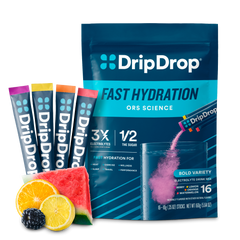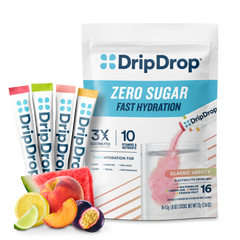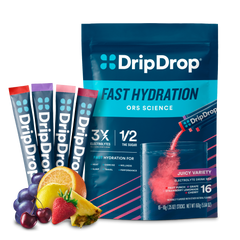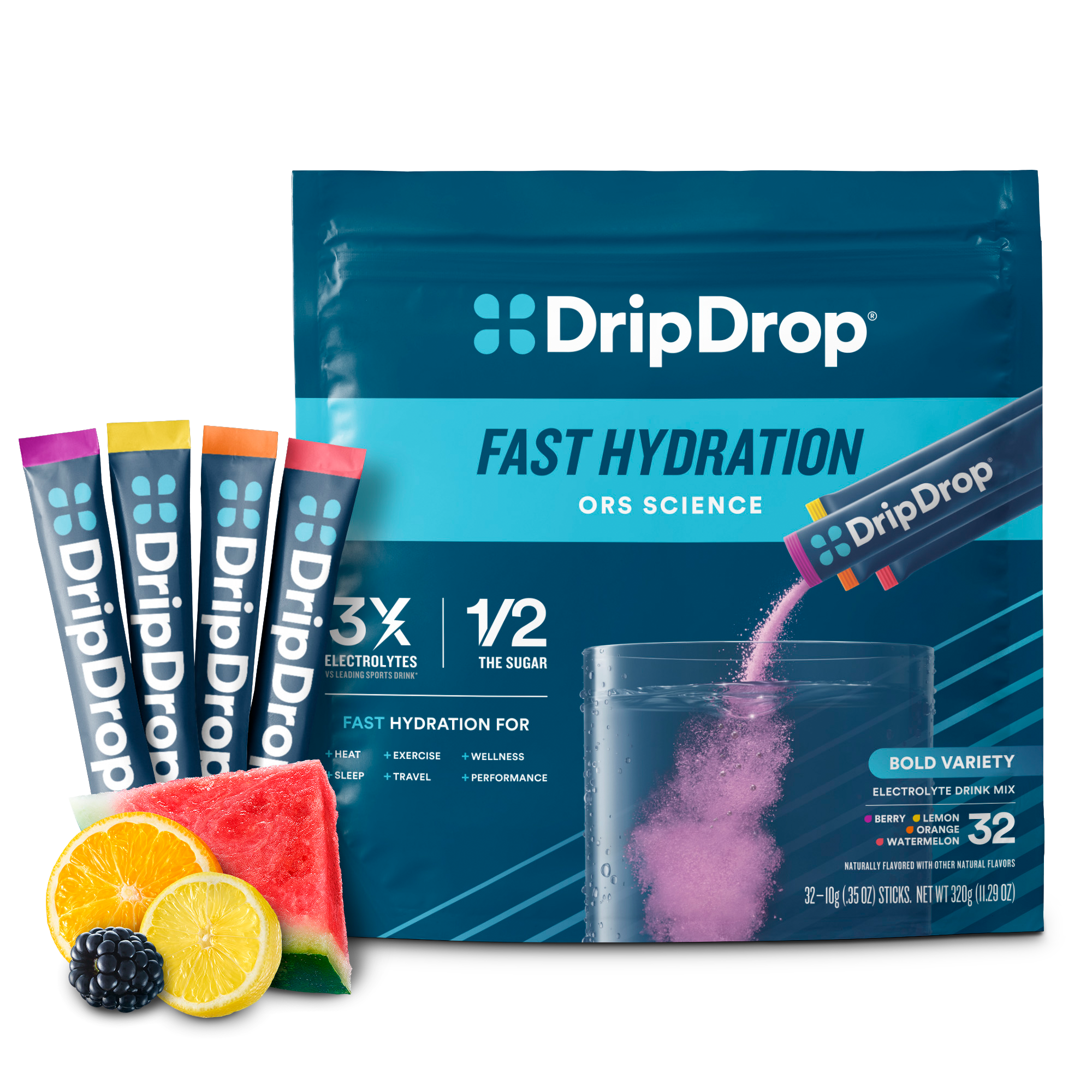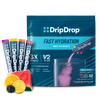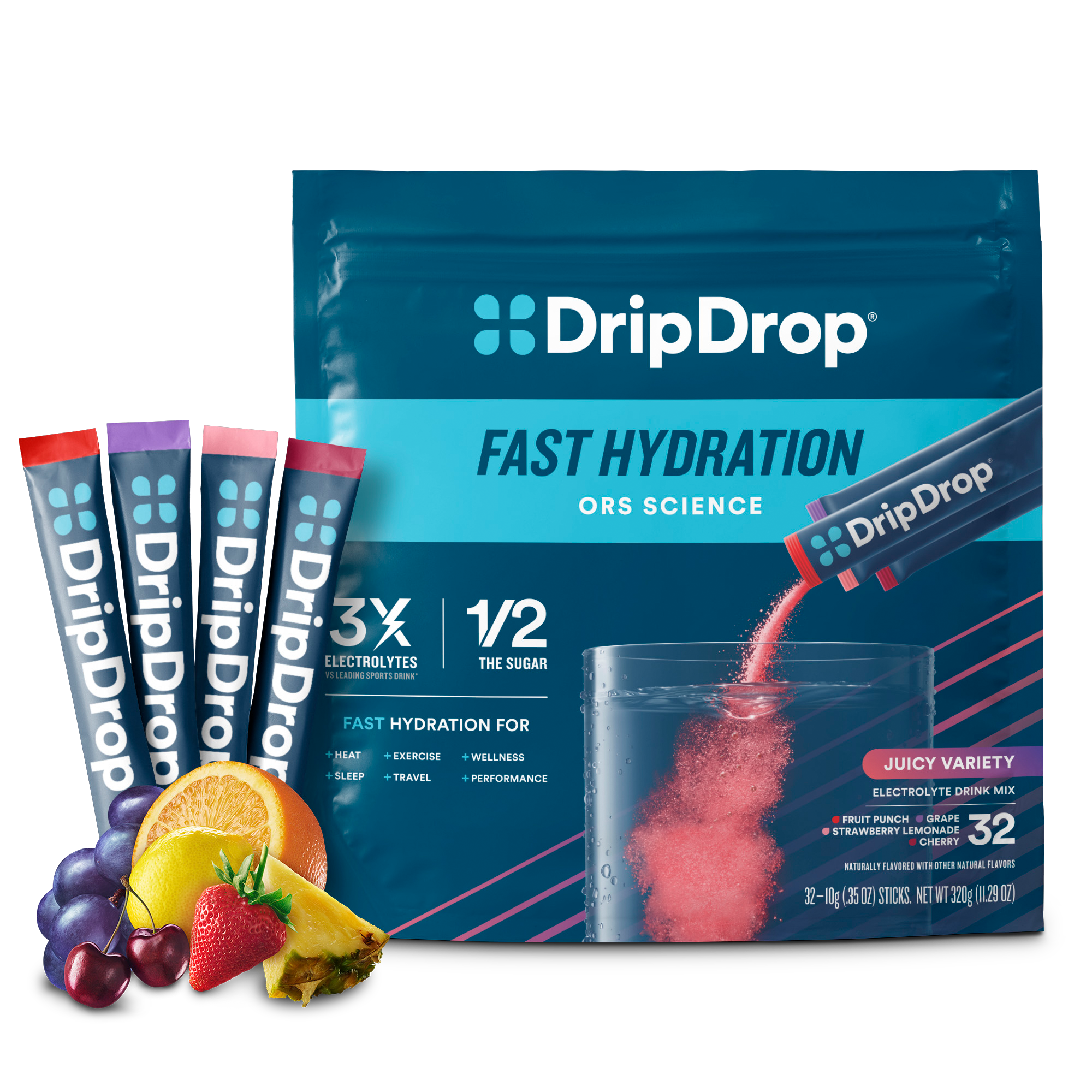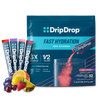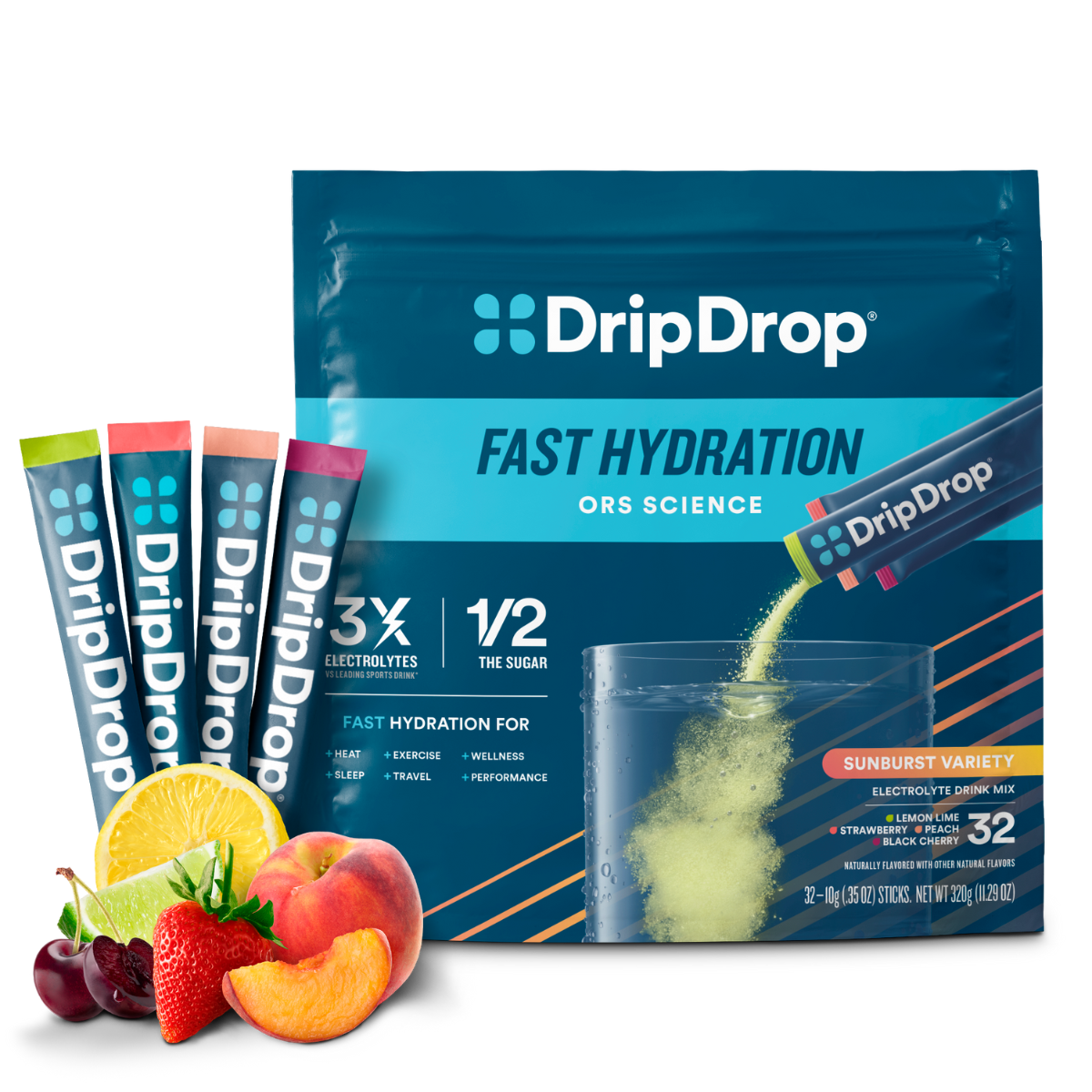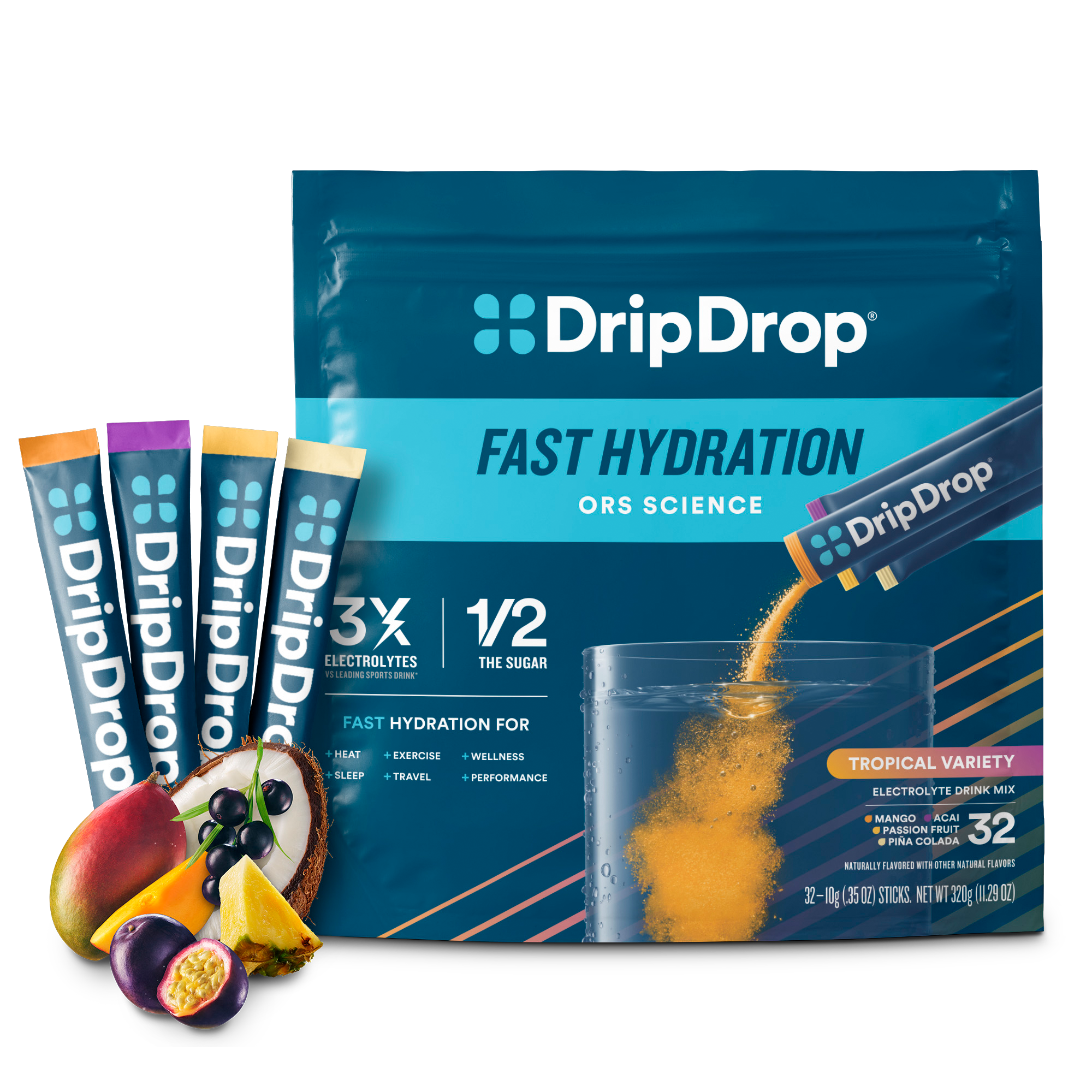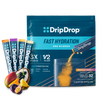There are two cardinal rules in the skincare world: Use sunscreen with a high SPF religiously and drink plenty of water. Naturally, when you think of how to hydrate skin, you may also be inclined to add skincare products to your routine. It’s true that skincare products can help with moisturizing.
However, if you don’t address underlying dehydration, you’ll likely still suffer from dehydrated skin. That’s because fluids and electrolytes play a key role in skin health.
Dehydrated skin is the result of dehydration, a condition where electrolyte and water loss is greater than intake. It depletes your skin’s moisture and can lead to dark circles, more prominent fine lines, and flaky skin.
The Truth About Dehydrated Skin
When it comes to skincare, many blogs talk about how to hydrate skin on the surface but neglect the importance of hydrating from the inside. Common recommendations include using moisturizers, lotions, and hydrating cleansers. You’ll also find recommendations for skincare ingredients like hyaluronic acid, ceramides, collagen, antioxidants, fatty acids, glycerin, and aloe vera.
While these and other ingredients like coconut oil and lipid face masks can help protect the skin’s barrier, they don’t do much to actually hydrate your skin. In fact, most skin care products don’t increase moisture in your skin because they do not penetrate the skin. They simply create a film or barrier that prevents additional moisture loss through evaporation.
If you suffer from dry skin caused by dehydration, these solutions won’t solve the problem. Instead, you need to focus on managing dehydration inside your body. Dehydration is a condition where you lose more fluids and electrolytes than you take in. The condition can have a dramatic effect on your body. It causes symptoms including dizziness, and dehydrated skin.
See, your skin is made up of 64% water. So, when you don’t get enough fluid and electrolytes, your skin doesn’t get what it needs to stay healthy. But just drinking water isn’t enough. Electrolytes are also key for both general hydration and skin health. In fact, research shows that your skin needs electrolytes like calcium and potassium to stay healthy. So when it comes to a process for how to hydrate skin, it’s key to address any underlying dehydration.
How to Tell if Your Skin Is Dehydrated
Before we dive into how to hydrate, it’s important to know how to tell if you’re dehydrated. Again, hydration is a key element of healthy skin. If you don’t get enough fluids and electrolytes, your skin can suffer.
When you’re dehydrated, you may experience dry skin that flakes and feels itchy. Fine lines and wrinkles may appear more prominent as your skin cells lose fluids. Chronic dehydration can increase the likelihood of breakouts and acne. Plus, with chronic dehydration, your skin barrier can break down as your body can’t produce enough natural oils like sebum in this state. This can also lead to poor wound healing.
In addition, dehydration can cause dark circles under your eyes. When you’re dehydrated, your blood volume decreases since there isn’t enough fluid in your system. This causes blood vessels to constrict. Since the skin around your eyes is thin, these blood vessels become more visible, resulting in a shadowy look under your eyes.
Dehydrated skin can impact all skin types from naturally dry skin and sensitive skin to oily skin. If you constantly experience dry skin, talk to a dermatologist. A dermatology expert can help you determine if you’re suffering from dehydration or if another ailment may be the culprit. They can also prescribe a skincare routine and suggest lifestyle changes to address dehydrated skin.
Dehydration won’t just affect your skin. It’ll affect a wide range of organs in your body.
Here’s how to tell if you’re dehydrated:
-
Skin dryness and dullness
-
Dry mouth
-
Low blood pressure
-
Headache
-
Extreme thirst
-
Lightheadedness and fatigue
-
Dizziness
-
Confusion and irritability
If your skin is dehydrated and you recognize the other symptoms of dehydration, it’s vital to act fast.
How to Hydrate Skin
We all know how important it is to stay hydrated. And now you also know that moisturizing and exfoliating dead skin doesn’t address the underlying problem of your dehydrated skin. Sure, hydrating ingredients like humectants can protect hydrated skin. But they don’t do much to treat the root cause of dehydrated skin.
That doesn’t mean you shouldn’t moisturize. It simply means that you also need to address dehydration from the inside out. Here’s how to hydrate skin by focusing on crushing dehydration.
Avoid Skin-Damaging Dehydration With DripDrop
If you’re wondering how to hydrate skin, skincare tips like using a moisturizer can help, but they won’t address the underlying issue. While moisturizer is an option on the surface (literally), it doesn’t do anything to address the root cause of dehydrated skin: dehydration. To tackle dehydration, you need a solution like DripDrop.
When you're in a state of dehydration, no amount of water alone is enough. Your body needs the perfect balance of essential electrolytes. With the precisely balanced ratio in DripDrop, you can replenish vital electrolytes and fluids to relieve dehydration quickly.
DripDrop was developed by a doctor on a mission to defeat life-threatening dehydration. The precise formula provides medically relevant electrolyte levels, improving on the World Health Organization’s Oral Rehydration Solution (ORS) standards because of its delicious taste, giving you a medically viable ORS that also tastes great.
For cases of mild to moderate dehydration, DripDrop is a fast, effective, and great-tasting remedy. The convenient packaging allows you to have DripDrop when you need it, where you need it. Get started with our most popular multi-flavor pouch for dehydration relief fast. Or, learn more about how you can save up to 25% on every purchase when you subscribe.

